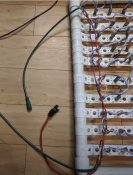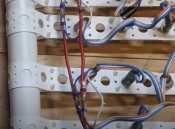- Thread starter
- #16
I already see that Pavle (original poster) understands this concept but there should rarely be a reason to cut the positive wire in the pixels next to an injection point. This would result in a cumbersome configuration because it doubles the number of injection points required in order to get all pixels within a certain minimum distance from an injection point. Power can travel in both directions from an injection point. It would be better to cut the positive halfway between the injection points.
I am still in the partially understands phase, still a way to go yet. For me, the more viewpoints offered, the more I question my configuration, however without all of the contributions nothing would be gained so very helpful to get all opinions.
The cutting of V+ is still a little foreign to me and even in this thread we have different opinions on this. I understand the logic, but still playing around with the practical implementation.
Will attempt to put together a diagram for this example and seek some additional advice.




